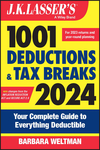Five Ways to Rebuild Your Retirement Savings
In the past couple of years, the stock market has decimated the retirement accounts of many people. Others who lost jobs were forced to tap into retirement savings for living expenses. All in all, the past few years have not been kind to retirement savings. Chasing after risky investments with the funds you still have on hand isn’t a good way to replenish retirement savings. It is better, if you are working now, simply to add to your savings on a tax-advantaged basis. Here are five ways to consider:
1. Contribute to an IRA or Roth IRA
For 2010, you can add up to $5,000 to an IRA ($6,000 if you’ll be at least 50 years old by the end of the year). You can split the contribution between IRAs in any way you like. For example, you can put $5,000 into a Roth IRA and nothing in a traditional IRA, or split your contribution so that the half in the traditional IRA becomes tax deductible now while the half in the Roth IRA grows on a tax-free basis.
You can still add funds for 2009-up to April 15, 2010-if you have not made 2009 contributions.
Caution: There are modified adjusted gross income limits on eligibility to make deductible IRA contributions if you participate in a qualified retirement plan and on making Roth IRA contributions. These limits are not the same for both types of IRAs.
2. Contribute to a 401(k) plan
If your employer offers a 401(k) plan, you can contribute up to $16,500 in 2010 ($22,000 if you’re at least 50 years old by the end of the year). While the contribution isn’t tax deductible, the portion of your wages that goes into the plan is not subject to income tax now.
Even better, if your employer makes matching contributions, you’ll get “free” retirement savings. You’ll have to remain with your employer, though, to fully vest in these contributions.
If you have only so much money to contribute to a retirement plan, decide whether to fund a 401(k) plan or an IRA (assuming income eligibility). Your choice may depend on investment options in the 401(k) plan and other considerations.
3. Convert a traditional IRA to a Roth IRA
In 2010, everyone-regardless of income-is eligible to convert some or all of a traditional IRA to a Roth IRA. While there is an immediate tax cost (the amount converted is taxed as if the funds had been withdrawn from the IRA), future earnings in the Roth IRA can build up tax free.
Special rule for conversions in 2010. If you make a conversion this year, half of the income is picked up in 2011 and half in 2012 unless you choose to report it all on your 2010 return. This presents a deferral opportunity, but must be weighed against the possibility of higher tax rates applying in those deferral years.
4. Buy U.S. savings bonds
An easy and risk-free way to set aside funds for retirement is to buy U.S. savings bonds-series EE or I. A tax rule lets you defer reporting all of the interest earned on the bonds until you cash them in or the bonds mature. This allows you to postpone reporting the interest for up to 30 years (the life of the bonds).
You can use part of your 2009 tax refund to buy Series I bonds in increments of $50, up to a total of $5,000. To do this, complete Form 8888, Direct Deposit of Refund to More Than One Account, so that a Treasury Direct account will be set up for you and bonds purchased in your name will be held there.
5. Keep working
If you are employed now or have your own business, the longer you can continue to work, the better off you’ll be:
- You’ll remain able to contribute to retirement plans, although no traditional IRA contributions are allowed after attaining age 70û.
- Your Social Security benefits will be larger because they are based on your highest earnings. If you delay collecting benefits after reaching normal retirement age, which is now 66, you’ll receive even larger monthly checks. For those born in 1943 and later, each year of delay results in an 8% increase in annual benefits; there’s no increase, though, after reaching 70.
Capital asset
Property subject to capital gain or loss treatment. Almost all assets you own are considered capital assets except for certain business assets or works you created.



